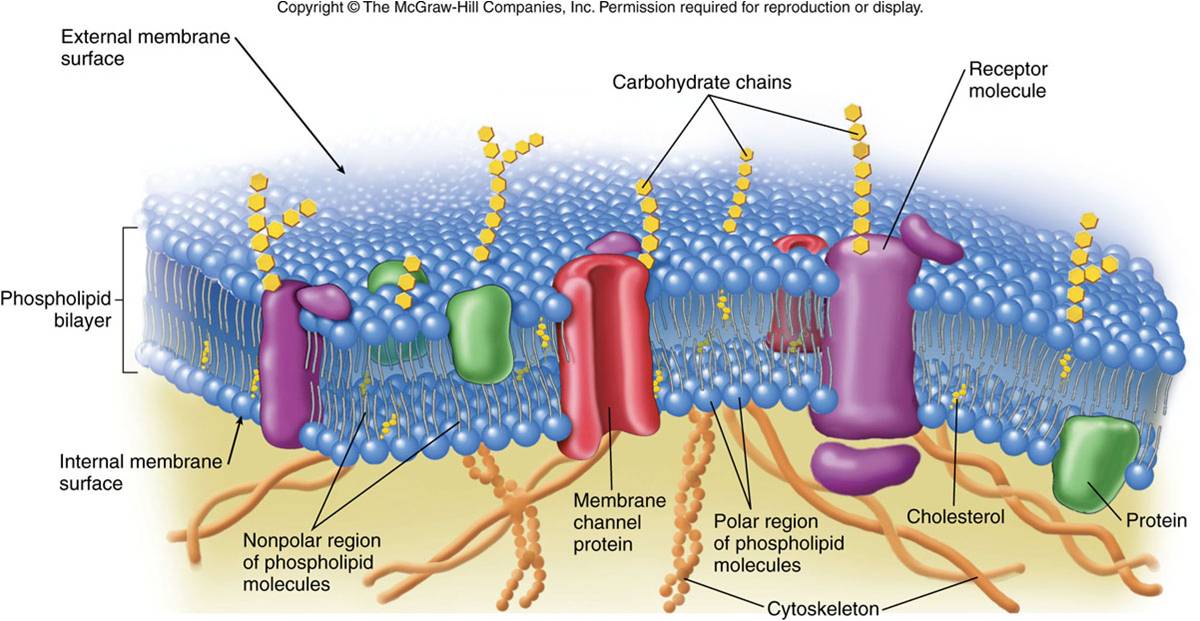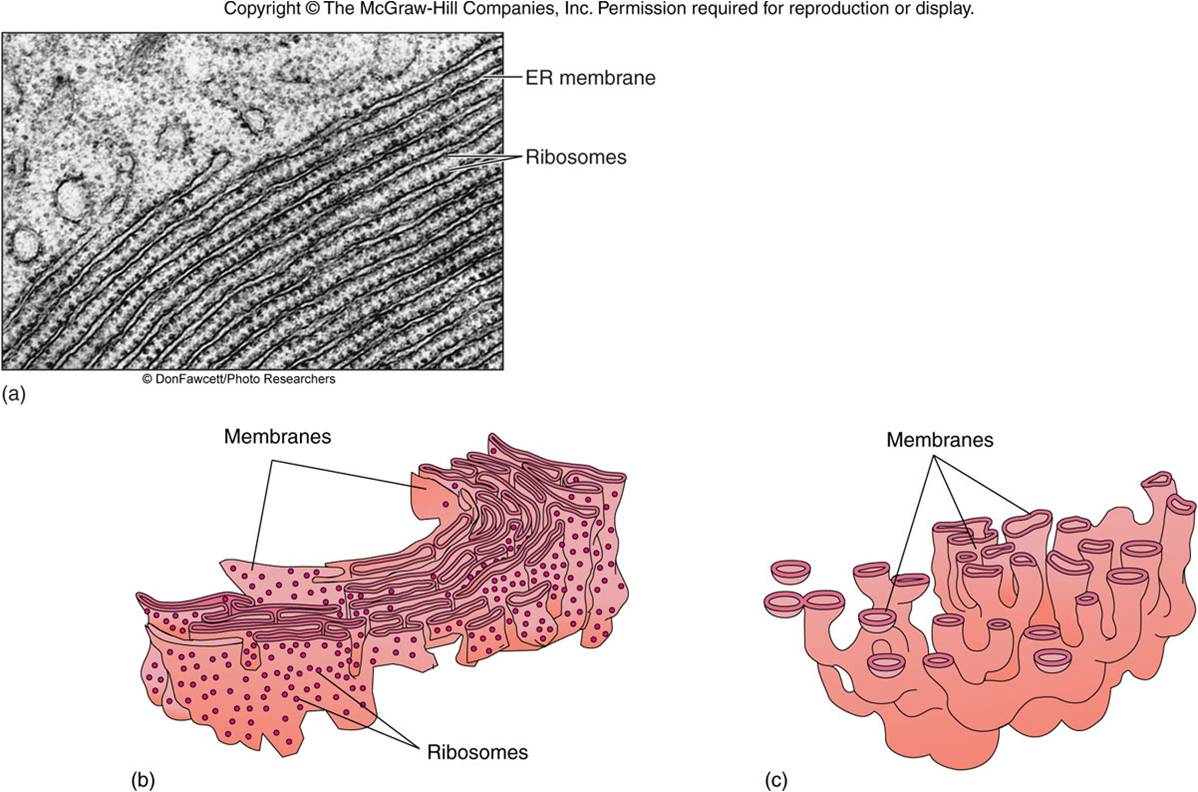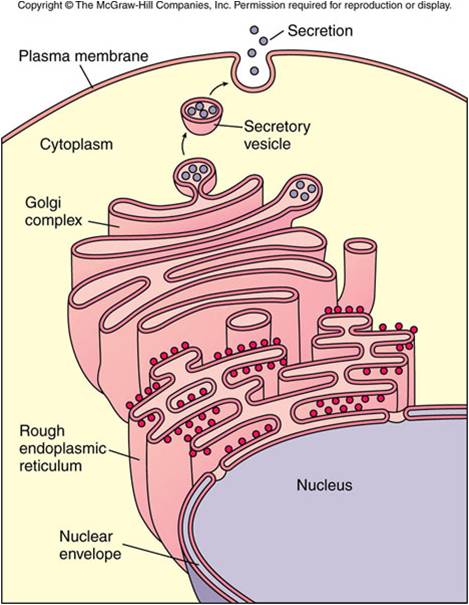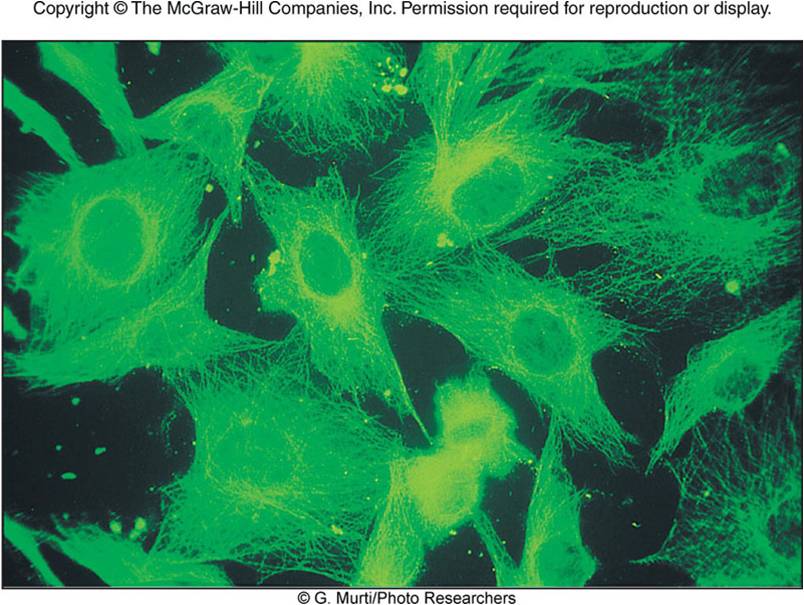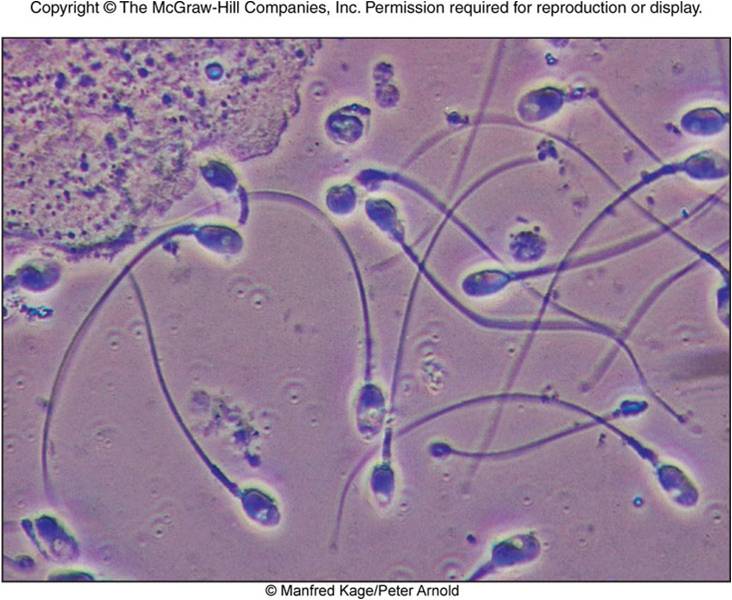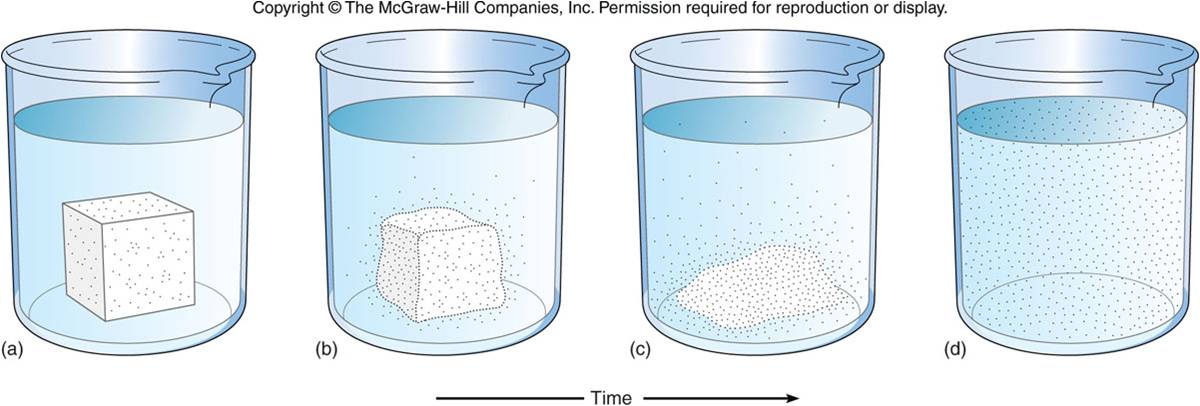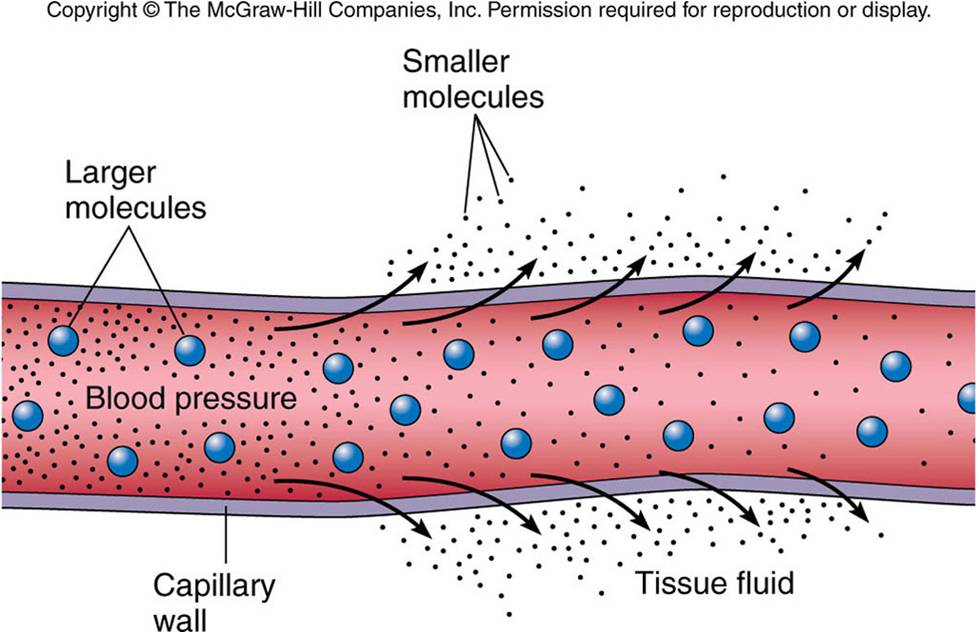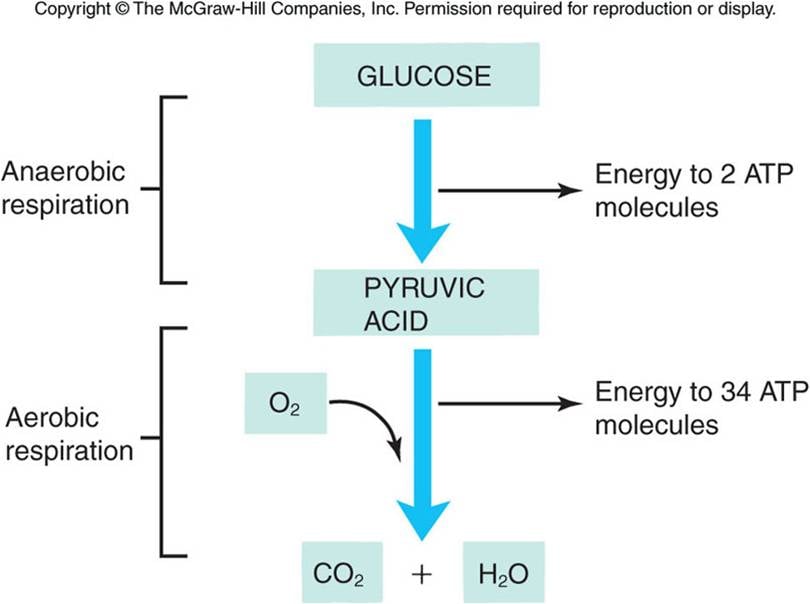Anatomy And Physiology Chapter 3
(193).jpg)
The study of the Body Anatomy. Parts of cells and more. . .
- 1.
THESE ARE THE SIMPLEST STRUCTURAL AND FUNCTIONAL UNIT OF A LIVING ORGANISM.
- A.
PLASMA MEMBRANE
- B.
NUCLEUS
- C.
RIBOSOMES
- D.
CELL
- E.
CILIA
Correct Answer
D. CELLExplanation
A cell is the simplest structural and functional unit of a living organism. It is responsible for carrying out all the necessary functions of life, such as metabolism, growth, and reproduction. Cells are enclosed by a plasma membrane, which regulates the movement of substances in and out of the cell. The nucleus is the control center of the cell, containing the genetic material. Ribosomes are responsible for protein synthesis. Cilia are hair-like structures that help with movement and sensory functions. However, out of all these options, the cell itself is the correct answer as it encompasses all the other components mentioned.Rate this question:
-
- 2.
HOW MANY CELLS IS THE HUMAN BODY MADE UP OF?
- A.
100 TRILLION
- B.
175 TRILLION
- C.
75 BILLION
- D.
100 MILLION
- E.
75 TRILLION
Correct Answer
E. 75 TRILLIONExplanation
The human body is made up of approximately 75 trillion cells. Cells are the basic building blocks of life and are responsible for carrying out various functions in the body. They form tissues, organs, and systems, working together to maintain the overall functioning of the body. This large number of cells allows for the complexity and diversity of human life and enables the body to perform its countless functions efficiently.Rate this question:
-
- 3.
THIS PART OF THE CELL: ¡Forms the Outer boundary of the cell ¡Barrier to wamster-soluble materials inside and outside the cell ¡Composition úTwo layers of phospholipids molecules úCholesterol ¨Phospholipids provide a barrier between water soluble materials inside and outside the cell. ¨Globular proteins that extend through the membrane serves as a passageway for transport for substances into and outside the cell.
Correct Answer
PLASMA MEMBRANEExplanation
The plasma membrane forms the outer boundary of the cell and acts as a barrier to water-soluble materials inside and outside the cell. It is composed of two layers of phospholipid molecules and cholesterol. The phospholipids provide a barrier between water-soluble materials, while the globular proteins that extend through the membrane serve as passageways for the transport of substances into and outside the cell. Therefore, the plasma membrane is responsible for maintaining the integrity of the cell and controlling the movement of substances in and out of the cell.Rate this question:
- 4.
WHICH PART OF THE CELL CARRY OUT THESE FUNCTIONS? ¨Proteins are attached to or embedded in the phospholipid layers ¡Passageways for transport of substances in and out of the cell ¡Receptors for enzymes and hormones ¡With carbohydrates serve as identification markers
- A.
CILIA
- B.
MICROVILLI
- C.
CYTOPLASM
- D.
PLASMA MEMBRANE
- E.
CENTRIOLES
Correct Answer
D. PLASMA MEMBRANEExplanation
The plasma membrane is responsible for carrying out these functions. Proteins are attached to or embedded in the phospholipid layers of the plasma membrane. It also contains passageways for the transport of substances in and out of the cell. The plasma membrane has receptors for enzymes and hormones, allowing for cellular communication. Additionally, along with carbohydrates, it serves as identification markers for the cell.Rate this question:
-
- 5.
TRUE OR FALSE:PLASMA MEMBRANES ARE PERMEABLE.IT ALLOWS ONLY CERTAIN MOLECULES TO ENTER OR EXIT THE CELL.
Correct Answer
TRUEExplanation
Plasma membranes are selectively permeable, meaning they allow only certain molecules to enter or exit the cell. This is achieved through various mechanisms such as diffusion, facilitated diffusion, and active transport. Small molecules like oxygen and carbon dioxide can freely pass through the membrane, while larger molecules and ions require specific transport proteins to cross the membrane. This selective permeability is essential for maintaining the internal environment of the cell and regulating the movement of substances in and out of the cell.Rate this question:
- 6.
NAME THE FOUR CHARACTERISTICS ARE TAKEN INTO CONSIDERATION WHEN PASSING THROUGH THE CELL MEMBRANE?
Correct Answer
ATTACHMENT TO CARRIER MOLCULES,IONIC CHARGES, MOLECULAR SIZE AND SOLUBILITYExplanation
The passage of molecules through the cell membrane is determined by several factors. One of these factors is the attachment to carrier molecules, which allows certain molecules to be transported across the membrane with the help of specific carrier proteins. Another factor is the ionic charges of the molecules, as the membrane is selectively permeable to ions based on their charges. The molecular size of the molecules also plays a role, as larger molecules may have difficulty passing through the small pores of the membrane. Lastly, solubility is important, as molecules that are lipid-soluble can easily pass through the lipid bilayer of the membrane.Rate this question:
- 7.
NAME THE PART OF THE CELL: ¡Fluid or gel-like substance that fills the interior of the cell ¡75% to 90% water plus organic and inorganic molecules ¡Semitransparent, thicker than water ¡Supported by úIntracellular membranes úCytoskeleton
- A.
CYTOPLASM
- B.
CILIA
- C.
ORGANELLE
- D.
PLASMA MEMBRANE
- E.
RIBOSOME
Correct Answer
A. CYTOPLASMExplanation
The correct answer is cytoplasm. Cytoplasm is the fluid or gel-like substance that fills the interior of the cell. It is composed of 75% to 90% water, along with organic and inorganic molecules. The cytoplasm is semitransparent and thicker than water. It is supported by intracellular membranes and the cytoskeleton.Rate this question:
-
- 8.
WHICH TWO ORGANELLES AID IN THE SUPPORT OF THE CYTOPLASM?
Correct Answer
CYTOSKELETON AND INTRACELLULAR MEMBRANEExplanation
The cytoskeleton and intracellular membrane both aid in the support of the cytoplasm. The cytoskeleton is a network of protein filaments that provides structural support and helps maintain the shape of the cell. It also plays a role in cell movement and cell division. The intracellular membrane, which includes the endoplasmic reticulum and Golgi apparatus, provides a framework for the organelles within the cytoplasm and helps with intracellular transport and communication. Together, these organelles contribute to the overall structure and function of the cytoplasm.Rate this question:
- 9.
THE PARTS OF THE CELL ARE MADE UP OF TINY ORGANS. SOME OF THESE ORGANS ARE CONSIST OF NUCLEOUS, GOGLI COMPLEX ETC. WHAT IS ANOTHER WORD WE CALL THESE ORGANS
- A.
MICROORGANISM
- B.
MACROORGANISM
- C.
CELL PARTS
- D.
ORGANELLES
- E.
ORGANS
Correct Answer
D. ORGANELLESExplanation
The correct answer is "organelles". In the given question, it is stated that the parts of the cell are made up of tiny organs. These tiny organs are referred to as organelles. Organelles are specialized structures within a cell that perform specific functions, similar to how organs perform specific functions in the body of a macroorganism. Therefore, the term "organelles" is used to describe these tiny organs within a cell.Rate this question:
-
- 10.
NAME THIS PART OF THE CELL: ¡Largest organelle in the nucleus ¡Nuclear envelope separates it from the cytoplasm úHas pores that aid in movement of materials between the nucleus and cytoplasm
- A.
CYTOPLASM
- B.
NUCLEUS
- C.
OSMOSIS
- D.
CENTRIOLES
- E.
CHROMOSOMES
Correct Answer
B. NUCLEUSExplanation
The given description matches the characteristics of the nucleus. It is the largest organelle in the nucleus, and it is separated from the cytoplasm by the nuclear envelope. The nucleus also has pores that allow for the movement of materials between the nucleus and cytoplasm. Therefore, the correct answer is "NUCLEUS."Rate this question:
-
- 11.
HOW MANY CHROMOSOMES PER NUCLEUS AND HOW MANY PAIRS ARE WITHIN THE NUCLEUS
Correct Answer
46 CHROMOSOMES, 23 PAIRS
46, 23
23 PAIRS, 46 CHROMOSOMESExplanation
The correct answer is 46 CHROMOSOMES, 23 PAIRS. This answer indicates that there are 46 individual chromosomes in the nucleus, which are organized into 23 pairs. Each pair consists of two homologous chromosomes, one inherited from each parent.Rate this question:
- 12.
WHAT ARE CHROMATINS?
- A.
INACTIVE FORM OF RRNA
- B.
ACTIVE FORM OF RNA
- C.
ACTIVE FORM DNA
- D.
INACTIVE FORM OF RNA
- E.
INACTIVE FORM OF DNA
Correct Answer
E. INACTIVE FORM OF DNAExplanation
Chromatins are the inactive form of DNA. DNA exists in two forms: active and inactive. In the inactive form, DNA is tightly coiled around proteins called histones, forming a structure known as chromatin. This coiling prevents the DNA from being accessed and transcribed into RNA. When the DNA needs to be activated and transcribed, the chromatin structure unravels, allowing the DNA to be accessed and used as a template for RNA synthesis. Therefore, the correct answer is that chromatins are the inactive form of DNA.Rate this question:
-
- 13.
NAME THE TWO COMPONENTS CHROMOSOMES ARE MADE OF WITHIN THE NUCLEUS?
- A.
DNA AND PROTEIN
- B.
RNA AND CARBOHYDRATE
- C.
DNA AND RNA
- D.
CARBOHYDRATE AND PROTEIN
- E.
RRNA AND DNA
Correct Answer
A. DNA AND PROTEINExplanation
Chromosomes are made up of DNA and protein. DNA is the genetic material that carries the instructions for the development and functioning of living organisms. It contains the genes that determine an individual's traits. Proteins, on the other hand, play a crucial role in the structure and function of cells. They help in various cellular processes and provide structural support to chromosomes. Therefore, DNA and protein are the two components that make up chromosomes within the nucleus.Rate this question:
-
- 14.
THESE ARE ORGANELLESFOUND INSIDE THE NUCLEUS, CONTAINS RNA AND PROTEIN AND ARE SITES OF RIBOSOMES PRODUCTION
Correct Answer
NUCLEOLIExplanation
Nucleoli are organelles found inside the nucleus of a cell. They contain RNA and protein and are responsible for the production of ribosomes. Ribosomes are essential for protein synthesis in the cell. Therefore, nucleoli play a crucial role in protein production and cellular function.Rate this question:
- 15.
NAME THIS PART OF THE CELL: ¡Composed of ribosomal RNA and protein ¡Site of protein synthesis in cells ¡Occur singly or in clusters
- A.
PLASMA MEMBRANE
- B.
RIBOSOME
- C.
CYTOSKELETON
- D.
CHROMOSOME
- E.
CYTOPLASM
Correct Answer
B. RIBOSOMEExplanation
A ribosome is a part of the cell that is composed of ribosomal RNA and protein. It is the site of protein synthesis in cells, where proteins are made. Ribosomes can occur singly or in clusters within the cell.Rate this question:
-
- 16.
NAME THE TWO COMPONENTS THAT MAKES UP THE RIBOSOME?
Correct Answer
RNA AND PROTEIN
PROTEIN AND RNAExplanation
The ribosome is composed of two components: RNA and protein. These components work together to carry out the process of protein synthesis. The RNA component, known as ribosomal RNA (rRNA), provides the structural framework for the ribosome and helps in catalyzing the formation of peptide bonds between amino acids. The protein component, known as ribosomal proteins, helps in stabilizing the structure of the ribosome and assisting in the binding of mRNA and tRNA during translation. Therefore, both RNA and protein are essential components of the ribosome.Rate this question:
- 17.
NAME THIS PART OF THE CELL: ¡Membranes that extend from the nucleus throughout cytoplasm ¡Functions úSupport cytoplasm úChannels to facilitate movement of materials within the cell
- A.
CILIA
- B.
CYTOSKELETON
- C.
CYTOPLASM
- D.
ENDOPLASMIC RETICULUM OR ER
- E.
ENDOCYTOSIS
Correct Answer
D. ENDOPLASMIC RETICULUM OR ERExplanation
The correct answer is Endoplasmic Reticulum or ER. The endoplasmic reticulum is a network of membranes that extends from the nucleus throughout the cytoplasm of the cell. It has various functions including supporting the cytoplasm and providing channels to facilitate the movement of materials within the cell.Rate this question:
-
- 18.
NAME THE TWO TYPES OF ER?
Correct Answer
ROUGH ER AND SMOOTH ER, SMOOTH ER AND SMOOTH ERExplanation
The correct answer is ROUGH ER AND SMOOTH ER. The endoplasmic reticulum (ER) is a network of membranes in the cell that is involved in the synthesis and transport of proteins and lipids. It can be classified into two types: rough ER and smooth ER. Rough ER is studded with ribosomes and is responsible for protein synthesis, while smooth ER lacks ribosomes and is involved in lipid metabolism, detoxification, and calcium storage. The repetition of "SMOOTH ER AND SMOOTH ER" is incorrect as it suggests that there are two types of smooth ER, which is not true.Rate this question:
- 19.
NAME THE TWO FUNCTIONS OF THE ER:
Correct Answer
SUPPORTS CYTOPLASM AND FACILITATES MOVEMENTS OF MATERIAL WITHIN THE CELLS, FACILITATES MOVEMENTS OF MATERIAL WITHIN THE CELLS AND SUPPORTS CYTOPLASMExplanation
The ER (endoplasmic reticulum) has two main functions: supporting the cytoplasm and facilitating movements of material within the cells. It provides structural support to the cytoplasm and helps maintain the shape of the cell. Additionally, the ER is responsible for the transport of proteins and other molecules within the cell, allowing for the movement of materials between different cellular compartments.Rate this question:
- 20.
NAME THE TYPE OF ER:HAS NUMEROUS ATTACHED RIBOSOMESPROTEINS MADE HERE ARE EXPORTED FROM THE CELL
Correct Answer
ROUGH ERExplanation
The given correct answer is "ROUGH ER". The rough ER, or rough endoplasmic reticulum, is a type of ER that has numerous attached ribosomes. Proteins made in the rough ER are then exported from the cell. This organelle plays a crucial role in protein synthesis and transportation within the cell. The ribosomes attached to the rough ER help in the production of proteins, which are then modified and packaged for export to other parts of the cell or outside the cell.Rate this question:
- 21.
NAME THIS ER:LACKS RIBOSOMESSITE OF LIPID SYNTHESIS
Correct Answer
SMOOTH ERExplanation
The correct answer is SMOOTH ER. The smooth endoplasmic reticulum (ER) lacks ribosomes and is responsible for lipid synthesis. It plays a crucial role in detoxification, carbohydrate metabolism, and the production of lipids such as phospholipids and steroids. The smooth ER is involved in various cellular processes and is especially abundant in cells that produce and secrete lipids, such as liver cells and cells of the endocrine system.Rate this question:
- 22.
NAME THIS ORGANELLE? ¡Stack of flattened membranous sacs ¡Processes and sorts synthesized substances into vesicles úSecretory vesicles
- A.
MITOCHONDRIA
- B.
GOGLI COMPLEX
- C.
LYSOSOMES
- D.
CHROMATIN
- E.
CHROMATID
Correct Answer
B. GOGLI COMPLEXExplanation
The correct answer is the Golgi complex. The Golgi complex is a stack of flattened membranous sacs that processes and sorts synthesized substances into vesicles, including secretory vesicles. It plays a crucial role in the modification, packaging, and distribution of proteins and lipids within the cell.Rate this question:
-
- 23.
NAME THIS CELL ORGANELLE: ¡Possess an inner folded membrane (cristae) and outer smooth membrane ¡Site of aerobic cellular respiration ¡“Powerhouse” of the cell
- A.
MICROFILAMENTS
- B.
VESICLES
- C.
CHROMOSOMES
- D.
MITOCHONDRIA
- E.
LYSOSOME
Correct Answer
D. MITOCHONDRIAExplanation
The correct answer is mitochondria. Mitochondria possess an inner folded membrane called cristae and an outer smooth membrane. They are the site of aerobic cellular respiration, which is the process that generates energy for the cell. Due to their role in producing energy, mitochondria are often referred to as the "powerhouse" of the cell.Rate this question:
-
- 24.
NAME THE PART OF THE CELL: ¡Contain powerful digestive enzymes ¡Function to digest úBacteria entering cell úCell parts to be replaced úDamaged or worn out cells
- A.
MICROFILAMENTS
- B.
CYTOPLASM
- C.
CHROMOSOME
- D.
MITOCHONDRIA
- E.
LYSOSOMES
Correct Answer
E. LYSOSOMESExplanation
Lysosomes are the part of the cell that contain powerful digestive enzymes. They function to digest bacteria that enter the cell, cell parts that need to be replaced, and damaged or worn out cells.Rate this question:
-
- 25.
NAME THIS PART OF THE CELL: ¡Microtubules úLong, thin tubules úSupport for cell and movement of organelles ¡Microfilaments úTiny rods of contractile protein úSupport cell and enable movement
Correct Answer
CYTOSKELETONExplanation
The cytoskeleton is the correct answer because it refers to the network of microtubules and microfilaments that provide structural support to the cell and enable movement of organelles. The microtubules are long, thin tubules that help in maintaining the cell's shape and provide tracks for organelle movement. On the other hand, microfilaments are tiny rods made of contractile proteins that contribute to cell movement and provide additional support. The cytoskeleton is essential for maintaining cell integrity and facilitating various cellular processes.Rate this question:
- 26.
DESCRIBE THE TWO COMPONENTS OF THE CYTOSKELETON AND THEIR DESCRIPTION
Correct Answer
Microtubules AND Long, thin tubules Support for cell and movement of organelles
Microfilaments AND Tiny rods of contractile protein Support cell and enable movementExplanation
Microtubules are long, thin tubules that provide support for the cell and facilitate the movement of organelles. They are composed of tubulin proteins and help maintain the cell's shape and structure. Microfilaments, on the other hand, are tiny rods made of contractile proteins. They also support the cell and enable movement by interacting with motor proteins. Together, microtubules and microfilaments make up the cytoskeleton, which plays a crucial role in maintaining cell shape, providing mechanical support, and facilitating cell movement.Rate this question:
- 27.
IN THIS PICTURE INDICATEWHAT IT REPRESENTS.
- A.
CYTOPLASM
- B.
CYTOSKELETON
- C.
NUCLEUS
- D.
CELL MEMBRANES
- E.
MICROFILAMENTS
Correct Answer
B. CYTOSKELETONExplanation
The correct answer is CYTOSKELETON. The cytoskeleton is a network of protein filaments that provide structural support and shape to the cell. It also plays a crucial role in cell movement, cell division, and organelle transport. In the given picture, the structure depicted resembles the cytoskeleton, with its intricate network of filaments extending throughout the cell. Therefore, the answer CYTOSKELETON is the most appropriate choice to represent the picture.Rate this question:
-
- 28.
NAME THIS PART OF THE CELL ¡Two short cylinders of microtubules near nucleus and oriented at right angles ¡Form and organize spindle fibers during cell division ¡Involved in forming microtubules in cilia and flagella
- A.
CYTOPLASM
- B.
CELL MEMBRANE
- C.
CENTRIOLES
- D.
VESSICLES
- E.
ENDOPLASMIC RECTICULUM
Correct Answer
C. CENTRIOLESExplanation
Centrioles are the correct answer for this question. Centrioles are two short cylinders made up of microtubules that are located near the nucleus and are oriented at right angles. They play a crucial role in forming and organizing spindle fibers during cell division. Additionally, centrioles are involved in forming microtubules in cilia and flagella.Rate this question:
-
- 29.
NAME THIS CELL ORGANELLE: ¡Numerous, short hair-like projections containing microtubules ¡Move substances along cell surface
Correct Answer
CILIAExplanation
Cilia are numerous, short hair-like projections containing microtubules that move substances along the cell surface. They are found in many different types of cells, including those in the respiratory tract, where they help to move mucus and trapped particles out of the lungs. Cilia are also present in the reproductive system, where they assist in the movement of eggs and sperm. Overall, cilia play a crucial role in facilitating the movement of substances across the cell surface.Rate this question:
- 30.
NAME THIS PART OF THE CELL: ¡Long, whip-like projections containing microtubules ¡Enables for movement of cells ¡Example: sperm
Correct Answer
FLAGELLAExplanation
Flagella are long, whip-like projections found on certain cells, such as sperm. They are composed of microtubules and are responsible for cell movement. Flagella enable cells to move by propelling themselves through a whip-like motion. This allows for various functions such as the movement of sperm towards the egg.Rate this question:
- 31.
NAME THIS ORGANELLE WITHIN THE CELL: ¡Extensions of the plasma membrane ¡Increase cell surface area and aid in substance absorption into the cell ¡Abundant in intestinal cells
Correct Answer
MICROVILLIExplanation
Microvilli are small, finger-like projections on the surface of a cell that increase its surface area. They are extensions of the plasma membrane and are particularly abundant in intestinal cells. These structures aid in the absorption of substances into the cell by providing more surface area for molecules to interact with.Rate this question:
- 32.
MOVEMENT OF SUBSTANCES THROUGH THE PLASMA MEMBRANE OCCURS BY TWO PROCESS. WHAT ARE THESE TWO PROCESSES?
Correct Answer
PASSIVE TRANSPORT AND ACTIVE TRANSPORT
ACTIVE TRANSPORT AND PASSIVE TRANSPORT
PASSIVE TRANSPORT (DOES NOT REQUIRE ENERGY)
ACTIVE TRANSPORT (REQUIRES ENERGY)Explanation
The movement of substances through the plasma membrane occurs through two processes: passive transport and active transport. Passive transport does not require energy, while active transport requires energy.Rate this question:
- 33.
WHAT ARE THE THREE TYPES OF PASSIVE TRANSPORT?
Correct Answer
DIFFUSION, OSMOSIS AND FILTRATION, OSMOSIS, DIFFUSION, FILTRATION AND OSMOSISExplanation
Passive transport refers to the movement of substances across a cell membrane without the use of energy. Diffusion is the movement of molecules from an area of high concentration to an area of low concentration. Osmosis is the movement of water across a selectively permeable membrane from an area of low solute concentration to an area of high solute concentration. Filtration is the movement of particles through a membrane as a result of a pressure difference. Therefore, the correct answer is diffusion, osmosis, and filtration.Rate this question:
- 34.
NAME THIS TPE OF PASSIVE TRANSPORT: ¡Net movement of molecules from an area of higher concentration to an area of lower concentration ¡Occurs in gases and liquids due to constant, random motion of molecules ¡Occurs in both living and non-living systems
- A.
DIFFUSION
- B.
OSMOSIS
- C.
FILTRATION
- D.
CELLULAR RESPIRATION
- E.
PROTEIN SYNTHESIS
Correct Answer
A. DIFFUSIONExplanation
Diffusion is the correct answer because it involves the net movement of molecules from an area of higher concentration to an area of lower concentration. This process occurs in gases and liquids due to the constant, random motion of molecules. It is also a passive transport mechanism that occurs in both living and non-living systems.Rate this question:
-
- 35.
NAME THIS TYPE OF PASSIVE TRANSPORT: ¡Diffusion of water through a selectively permeable membrane ¡Water moves from area of higher water concentration (lower solute concentration) to area of lower water concentration (higher solute concentration)
- A.
TRANSFER RNA
- B.
DIFFUSION
- C.
PROTEIN SYNTHESIS
- D.
OSMOSIS
- E.
FILTRATION
Correct Answer
D. OSMOSISExplanation
Osmosis is the correct answer because it refers to the diffusion of water through a selectively permeable membrane. In osmosis, water molecules move from an area of higher water concentration (lower solute concentration) to an area of lower water concentration (higher solute concentration). This process is important for maintaining the balance of water and solutes in cells and is a type of passive transport because it does not require energy expenditure by the cell.Rate this question:
-
- 36.
This is the degree to which a solution’s solute concentration causes water to move into or out of cells. (How much pulling power is in that water)
Correct Answer
TONICITYExplanation
Tonicity refers to the ability of a solution's solute concentration to cause water to move into or out of cells. It determines the pulling power of water.Rate this question:
- 37.
THERE ARE THREE TYPES OF TONIC SOLUTION:DEFINE THIS SOLUTION úHas a lower concentration of solutes and higher concentration of water
Correct Answer
HYPOTONIC SOLUTIONExplanation
A hypotonic solution is a type of tonic solution that has a lower concentration of solutes and a higher concentration of water. In this solution, there is a higher amount of water molecules compared to solute molecules. This causes water to move into the cells through osmosis, resulting in the cells swelling or expanding.Rate this question:
- 38.
THERE ARE THREE TYPES OF TONIC SOLUTION:DEFINE THIS SOLUTION úHas a higher concentration of solutes and lower concentration of water
Correct Answer
HYPERTONIC SOLUTIONExplanation
A hypertonic solution is a solution that has a higher concentration of solutes and a lower concentration of water compared to another solution. In other words, it has a higher osmotic pressure. When a cell is placed in a hypertonic solution, water will move out of the cell, causing it to shrink or shrivel. This is because the concentration of solutes outside the cell is higher, creating a concentration gradient that drives the movement of water out of the cell.Rate this question:
- 39.
THERE ARE THREE TYPES OF TONIC SOLUTION:DEFINE THIS SOLUTION úSolutions have the same concentration of solutes and water
Correct Answer
ISOTONIC SOLUTIONExplanation
An isotonic solution refers to a solution that has the same concentration of solutes and water as the cells in a living organism. This means that the solution has a balanced osmotic pressure, allowing for the free movement of water across the cell membrane without causing any net movement of water into or out of the cell. In other words, an isotonic solution maintains the cell's shape and size as there is no osmotic pressure to cause water to flow in or out of the cell.Rate this question:
- 40.
DEFINE THIS TYPE OF PSSIVE TRANSPORT: ¡Forces smaller molecules in a solution through a membrane due to greater hydrostatic pressure on one side ¡Hydrostatic pressure is the pressure exerted by a fluid against a wall or membrane
Correct Answer
FILTRATIONExplanation
Filtration is a type of passive transport that occurs when smaller molecules in a solution are forced through a membrane due to a greater hydrostatic pressure on one side. Hydrostatic pressure refers to the pressure exerted by a fluid against a wall or membrane. In filtration, the pressure difference causes the movement of molecules from an area of higher pressure to an area of lower pressure, allowing for the separation of substances based on their size and solubility.Rate this question:
- 41.
NAME THE THREE TYPES OF ACTIVE TRANSPORT
Correct Answer
CARRIER PROTEIN, ENDOCYTOSIS AND EXOCYTOSIS, ENDOCYTOSIS, EXOCYTOSISExplanation
The correct answer is "CARRIER PROTEIN, ENDOCYTOSIS AND EXOCYTOSIS, ENDOCYTOSIS, EXOCYTOSIS". Active transport is the movement of substances across a cell membrane against their concentration gradient, requiring energy. Carrier proteins are involved in facilitated diffusion, which is a type of active transport. Endocytosis is the process by which cells take in substances by engulfing them in a vesicle, while exocytosis is the opposite process, where cells release substances by fusing vesicles with the cell membrane. So, all three options listed are types of active transport mechanisms.Rate this question:
- 42.
NAME THIS TYPES OF ACTIVE TRANSPORT: ¡Located in the plasma membrane with the ability to bind molecule or ion ¡Uses energy to change shape and move the molecule/ion from one side of the membrane to the other ¡From area of low concentration to area of high concentration
Correct Answer
CARRIER PROTEINExplanation
Carrier proteins are a type of active transport mechanism located in the plasma membrane. They have the ability to bind molecules or ions and use energy to change shape and move the molecule/ion from one side of the membrane to the other. This type of active transport occurs from an area of low concentration to an area of high concentration. Carrier proteins facilitate the movement of specific molecules or ions across the membrane, allowing for the regulation of their concentration inside the cell.Rate this question:
- 43.
NAME THIS TYPE OF ACTIVE TRANSPORT: ¡ENGULFMENT OF PARTICLES AND LIQUID DROPLETSPHAGOCYTOSIS - CELL EATINGPINOCYTOSIS - CELL DRINKING
Correct Answer
ENDOCYTOSISExplanation
Endocytosis is the correct answer because it refers to the process by which cells take in substances from their external environment by engulfing them into a vesicle formed by the cell membrane. This process can involve the engulfment of particles or liquid droplets, which is known as phagocytosis and pinocytosis, respectively. Therefore, endocytosis encompasses both phagocytosis and pinocytosis, making it the appropriate term for this type of active transport.Rate this question:
- 44.
NAME THIS TYPE OF ACTIVE TRANSPORT:SUBSTANCES ARE EXPELLED FROM THE CELL
Correct Answer
EXOCYTOSISExplanation
Exocytosis is a type of active transport where substances are expelled from the cell. During exocytosis, vesicles containing the substances fuse with the cell membrane and release their contents outside the cell. This process is important for the secretion of various molecules such as hormones, neurotransmitters, and digestive enzymes. It allows the cell to communicate with its surroundings and regulate its internal environment by releasing specific substances.Rate this question:
- 45.
IDENTIFY THE NAME OF THIS PROCESS: ¨Process that breaks down nutrients to release energy and transfer some of this energy into ATP (Taking in molecules to break them down to produce energy)
Correct Answer
CELLULAR RESPIRATIONExplanation
Cellular respiration is the process that breaks down nutrients to release energy and transfer some of this energy into ATP. It involves the breakdown of molecules, such as glucose, in the presence of oxygen to produce ATP, carbon dioxide, and water. This process occurs in the mitochondria of cells and is essential for the survival and functioning of organisms.Rate this question:
- 46.
NAME THE TWO TYPES OF CELULAR RESPIRATION?
Correct Answer
ANAEROBIC AND AEROBIC
AEROBIC
ANAEROBIC (DOES NOT REQUIRE OXYGEN)
AEROBIC (REQUIRES OXYGEN)Explanation
The correct answer is aerobic and anaerobic. Aerobic respiration is a type of cellular respiration that requires oxygen to produce energy, while anaerobic respiration does not require oxygen. Therefore, both aerobic and anaerobic respiration are the two types of cellular respiration.Rate this question:
- 47.
IDENTIFY THIS CELLULAR RESPIRATION: ¡No oxygen is required ¡Occurs in the cytoplasm ¡Uses 1 glucose molecule to produce 2 pyruvic acid molecules and 2 ATP
Correct Answer
ANAEROBICExplanation
This cellular respiration process is called anaerobic respiration because it does not require oxygen. It takes place in the cytoplasm of the cell. During this process, one glucose molecule is broken down to produce two pyruvic acid molecules and two ATP molecules.Rate this question:
- 48.
IDENTIFY THIS CELLULAR RESPIRATION: ¡Requires oxygen ¡Occurs in mitochondria ¡Changes 2 pyruvic acid molecules into carbon dioxide, water, and 36 ATP
Correct Answer
AEROBICExplanation
The given answer "AEROBIC" is correct because it matches all the given characteristics of the cellular respiration process described. Aerobic respiration is a type of cellular respiration that requires oxygen, takes place in the mitochondria, and converts 2 pyruvic acid molecules into carbon dioxide, water, and 36 ATP.Rate this question:
- 49.
IDENTIFY THIS PROCESS OF SYNTHESIS. ¨DNA and the genetic code ¡DNA consists of 2 strands of nucleotides held together by hydrogen bonds between organic bases ¡Organic bases are adenine, thymine, cytosine, guanine
Correct Answer
PROTEIN SYNTHESISExplanation
This process of synthesis is called protein synthesis. DNA contains the genetic code which consists of two strands of nucleotides held together by hydrogen bonds between organic bases. The organic bases in DNA are adenine, thymine, cytosine, and guanine. Protein synthesis is the process by which the genetic information in DNA is used to create proteins.Rate this question:
- 50.
NAME THE FOUR ORGANIC BASES OF PROTEIN SYNTHESIS
Correct Answer
ADENINE, THYMINE, GUANINE, CYTOSINEExplanation
The four organic bases mentioned in the answer are Adenine, Thymine, Guanine, and Cytosine. These bases are found in DNA molecules and are essential for protein synthesis. Adenine pairs with Thymine, and Guanine pairs with Cytosine, forming the base pairs that make up the DNA double helix structure. During protein synthesis, the DNA is transcribed into RNA, and the sequence of these bases determines the sequence of amino acids in the protein being synthesized. Therefore, these four organic bases play a crucial role in protein synthesis.Rate this question:
Quiz Review Timeline +
Our quizzes are rigorously reviewed, monitored and continuously updated by our expert board to maintain accuracy, relevance, and timeliness.
-
Current Version
-
Mar 22, 2023Quiz Edited by
ProProfs Editorial Team -
Jan 18, 2010Quiz Created by
Smensah



